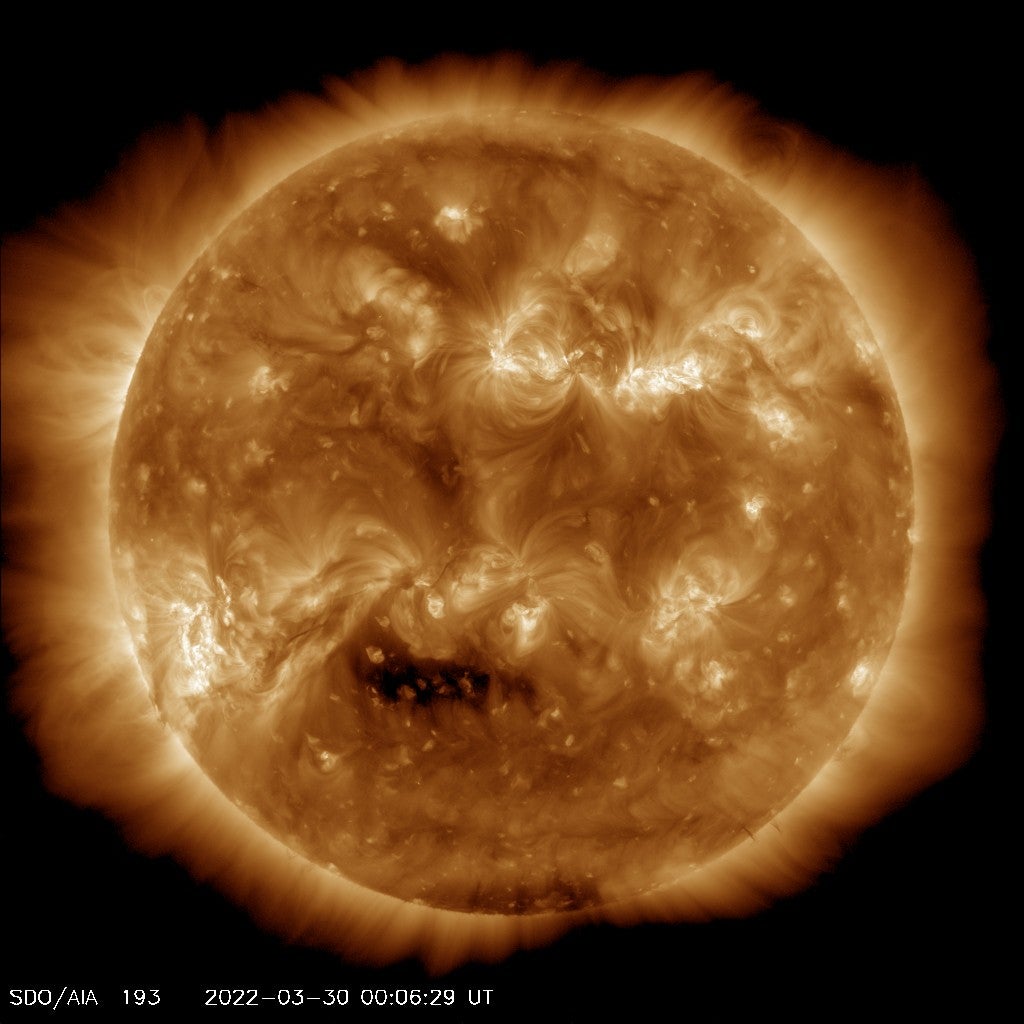Solar storm watch issued after strong solar flare on Wednesday
A Nasa spacecraft captured a strong solar flare Wednesday afternoon, raising the possibility of a geomagnetic storm Thursday

Your support helps us to tell the story
From reproductive rights to climate change to Big Tech, The Independent is on the ground when the story is developing. Whether it's investigating the financials of Elon Musk's pro-Trump PAC or producing our latest documentary, 'The A Word', which shines a light on the American women fighting for reproductive rights, we know how important it is to parse out the facts from the messaging.
At such a critical moment in US history, we need reporters on the ground. Your donation allows us to keep sending journalists to speak to both sides of the story.
The Independent is trusted by Americans across the entire political spectrum. And unlike many other quality news outlets, we choose not to lock Americans out of our reporting and analysis with paywalls. We believe quality journalism should be available to everyone, paid for by those who can afford it.
Your support makes all the difference.The US National Oceanic and Atmospheric Administration’s Space Weather Prediction Center has issued a geomagnetic storm watch for Thursday, 31 March, after a strong solar flare erupted from the near side of the Sun Wednesday afternoon.
At 5:35 p.m. Wednesday, an X-class flare erupted from a group of sunspots on the northeast region of the Sun relative to Earth and was captured by Nasa’s Solar Dynamics Observatory spacecraft. X-class flares are the most intense class of flare, and the electromagnetic energy released by the flare may have disrupted radio communications on Earth during the afternoon, according to Noaa.
While the energy released by solar flares reaches Earth at the speed of light, Noaa and Nasa observations suggest the flare was associated with a coronal mass ejection from the sun’s upper atmosphere. A coronal mass ejection is a plume of charged particles released from eruptions on the Sun that can take hours to reach the Earth, but can cause geomagnetic storms by transferring their high energy into our planet’s magnetic field.
On 4 February, particles from a coronal mass ejection triggered a geomagnetic storm that swelled the upper atmosphere enough to pull 40 newly launched SpaceX satellites from their orbits.
Noaa’s space weather prediction center issued a watch for a potential G3 class geomagnetic storm for Thursday. G3 is considered a strong storm, while a G2 is moderate and a G1 is a minor storm. The storm that brought down the SpaceX satellites was a G1 geomagnetic storm.
Flares, coronal mass ejections, and associated geomagnetic storms are likely to increase in the coming years, as the solar activity increases toward the peak of a roughly 11 year cycle in 2025.
Join our commenting forum
Join thought-provoking conversations, follow other Independent readers and see their replies
Comments